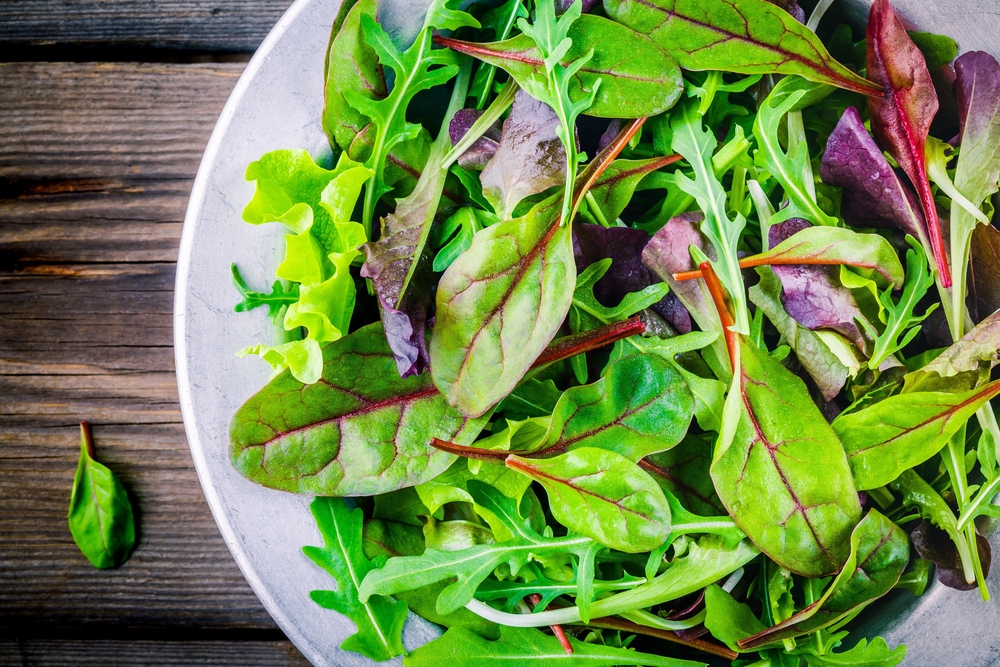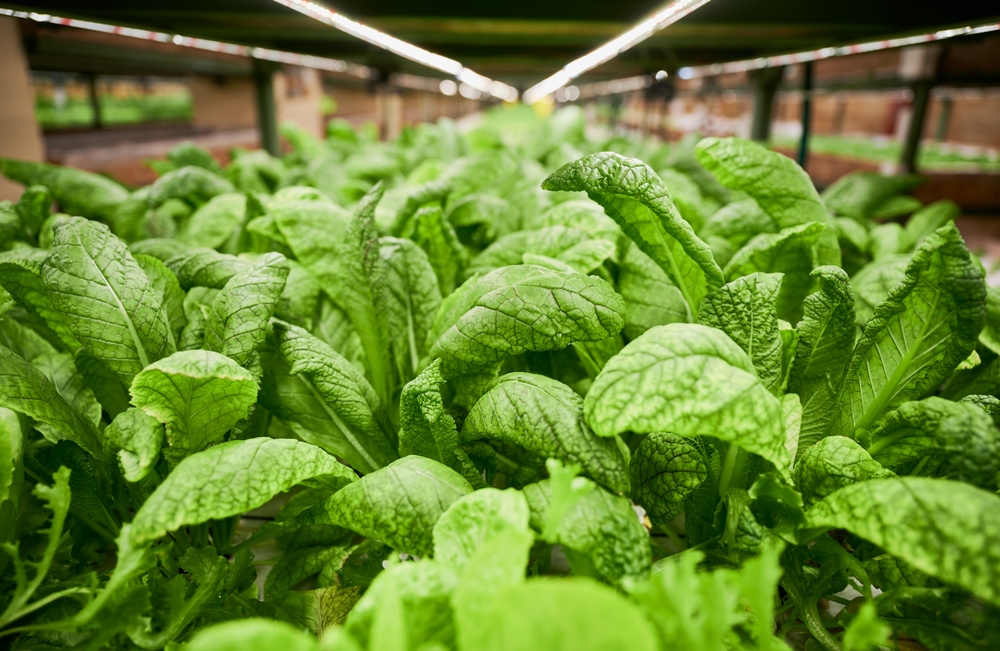
Image Source: Shutterstock.com
You might think that the crisp, fresh taste of spinach, kale, and lettuce comes from how they’re grown—or maybe how recently they were picked. But the real secret ingredient? Cool nights.
When temperatures drop and the air feels sharp enough to make your breath visible, leafy greens turn into flavor powerhouses. It’s one of nature’s clever tricks—part survival strategy, part culinary magic—and once you understand it, you’ll never look at a fall salad the same way again. So grab your sweater, because we’re diving into why those chilly evenings make your greens taste like they’ve just leveled up.
The Science of Sweet Survival
When nighttime temperatures cool down, leafy greens react by shifting their metabolism into a kind of self-preserving mode. To protect themselves from frost, they start converting starches into sugars—a process that acts like natural antifreeze inside the plant’s cells. Those sugars don’t just keep the leaves from freezing; they also give greens a sweeter, more complex flavor. It’s the same principle behind why carrots, beets, and even apples taste better after a frost. The result is greens with less bitterness, more sweetness, and a flavor that feels like a gentle nod from nature saying, “You’ve earned this.”
Bitterness Takes a Back Seat
If you’ve ever taken a bite of raw kale in midsummer and felt like your taste buds were being punished, blame the heat. Warm temperatures increase the production of compounds called glucosinolates—the same chemicals that give mustard and horseradish their bite. But when nights turn cool, the plant reduces those compounds, balancing its internal chemistry to focus on survival instead of defense. The result? A smoother, more mellow flavor that’s easier to love raw and doesn’t need a gallon of dressing to make it palatable. Cooler nights are nature’s built-in flavor filter, toning down harshness and letting the greens’ natural sweetness shine through.
The Chill Factor and Leaf Texture
It’s not just about flavor—cooler nights actually change how greens feel, too. Plants exposed to steady cool temperatures tend to grow slower, which makes their leaves denser and more tender at the same time. The slow growth allows cell walls to develop strength without becoming tough, giving your greens that perfect combination of crisp and delicate. This is why fall-grown spinach snaps with freshness while summer spinach can feel limp and lifeless. Cooler weather gives greens time to mature gracefully, developing both structure and flavor like a fine wine aging under perfect conditions.

Image Source: Shutterstock.com
Sugar Rush in the Garden
Here’s where things get interesting: when the sun goes down and temperatures drop, photosynthesis stops—but respiration keeps going. During the day, plants use sunlight to produce sugars, and at night, they burn some of those sugars for energy. But in cooler weather, that nighttime energy burn slows down dramatically. That means more sugar sticks around inside the plant, accumulating in the leaves and boosting their natural sweetness. The colder the night (within reason), the more concentrated those sugars become, giving you greens that taste like they’ve been lightly kissed by sweetness instead of bitterness.
Why Fall Harvests Taste So Good
Ask any gardener or farmer, and they’ll tell you: fall-grown greens are magic. After the relentless heat of summer fades, the combination of bright days and cool nights creates the perfect recipe for flavor. Lettuce becomes buttery instead of bland, spinach tastes richer, and arugula loses some of its bite while keeping its peppery charm. Even chard and collard greens—known for their toughness—turn tender and sweet when the nights grow longer and cooler. This is why autumn farmers’ markets often showcase greens that taste far better than their spring counterparts.
The Farmer’s Advantage: Timing the Chill
Professional growers know this secret all too well, and they plan their planting schedules to take advantage of it. By sowing seeds late in the summer, farmers ensure that their crops mature just as nights begin to cool. This timing maximizes the sugar conversion process and gives the greens that premium fall flavor foodies rave about. You can taste the difference: greens harvested after a cool spell often have deeper color, firmer texture, and a mild sweetness that no artificial fertilizer could ever replicate. Timing, it turns out, is everything when it comes to growing great greens.
Your Home Garden Can Benefit Too
You don’t need acres of farmland to take advantage of the temperature trick. Even backyard gardeners or balcony growers can use the chill factor to their benefit. If you plant leafy greens like spinach, lettuce, or kale in late summer, you’ll hit that magical cool-night window just right. As temperatures drop, resist the urge to cover or overprotect your plants—let them feel the chill. They’ll respond by building up sugars and developing flavors that taste like you’ve somehow mastered the art of gourmet gardening.
Storing the Flavor
Once you’ve harvested those perfectly sweet, cool-weather greens, the goal is to keep that flavor as long as possible. The same chill that enhances their taste in the garden helps preserve it in your fridge. Store your greens dry, loosely wrapped, and at a cool, consistent temperature to lock in those delicate sugars. Avoid washing until you’re ready to eat them—excess moisture can speed up decay and dull their flavor. Properly stored, fall-grown greens stay fresher longer and maintain that just-picked vibrancy.
A Lesson From Nature’s Rhythm
The connection between cool nights and sweet greens isn’t just a farming quirk—it’s a reminder that flavor is tied to patience, timing, and environment. In a world obsessed with instant results, nature still insists that the best taste comes from slowing down and letting the seasons do their work. Cooler nights signal the plant to focus inward, conserve energy, and sweeten up—a rhythm that mirrors how people often slow down and savor life in the fall, too. When you bite into a salad bursting with crisp, flavorful greens, you’re literally tasting the season’s balance between warmth and cold. It’s a delicious reminder that good things come to those who grow (and wait).
The Cool Secret Behind Delicious Greens
Who knew that something as simple as a cool evening could transform the humble leaf into a flavor-packed superstar? Those chilly nights trigger a natural process that swaps starch for sugar, toughness for tenderness, and bitterness for balance. Whether you’re a seasoned gardener, a farmer’s market regular, or just a fan of a really good salad, you’ve probably tasted this difference without realizing it. Cooler nights don’t just change the weather—they change your plate.
Have you noticed your greens tasting better in fall or after a cold snap? Share your thoughts or stories in the comments below.
You May Also Like…
9 Organic Fertilizers That Work Best in Cooler Soil
9 Plants That Attract Pollinators in the Cool Months
Why Over-Fertilizing Kills More Plants in Fall
8 Garden Myths That Fail in Autumn Weather
Why Autumn Is Ideal for Planting Fruit Trees
Leave a Reply